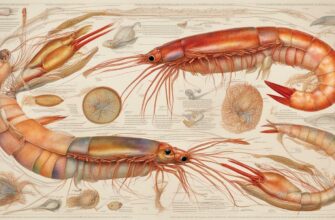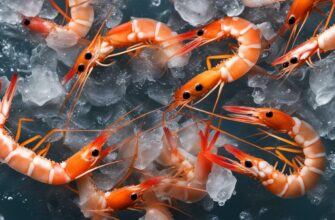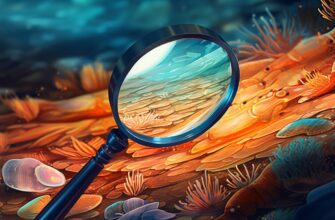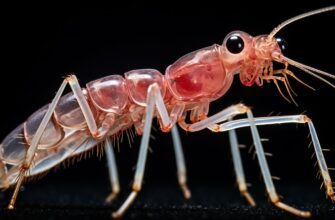Shrimps are some of the most interesting crustaceans in the sea. They come in a variety of sizes and colors and can be found in almost every corner of the ocean. But one question that often comes to mind when thinking about shrimps is whether they have hearts. In this section, we will explore the anatomy of these tiny creatures to uncover the truth.
Shrimps are fascinating creatures that have adapted uniquely to their aquatic environment. To understand whether they possess a heart, we must first look at their internal anatomy. This will give us a better understanding of their cardiovascular system, which is responsible for the circulation of blood throughout their bodies.
- The Anatomy of Shrimps
- The Cardiovascular System of Shrimps
- Do Shrimps Possess a Heart?
- The Circulatory System of Shrimps
- Shrimps and Their Unique Adaptations
- Shrimps and Their Cardiovascular System
- Frequently Asked Questions about Shrimps’ Hearts
- Do all shrimps have hearts?
- How does a shrimp’s heart function?
- How many chambers does a shrimp’s heart have?
- Does a shrimp’s heart play a role in their unique adaptations?
The Anatomy of Shrimps
Shrimps are small crustaceans that belong to the order Decapoda, which includes more than 10,000 species of crabs, lobsters, and shrimp. They have a hard exoskeleton that protects their soft internal organs and allows them to move through the water with ease.
Shrimps have a complex anatomy, with several specialized structures that enable them to survive in their aquatic environment. Their body is divided into three main parts: the head, thorax, and abdomen.
The head contains the shrimp’s sensory organs, including compound eyes, antennae, and a pair of mandibles used for feeding. The thorax is where the shrimp’s legs and swimmerets are located, which they use for locomotion and reproduction.
One of the most important structures in shrimps’ anatomy is their cardiovascular system, which is responsible for delivering oxygen and nutrients to their organs and tissues.
The Cardiovascular System of Shrimps
The cardiovascular system of shrimps consists of a network of blood vessels that transport hemolymph (the equivalent of blood in invertebrates) throughout their bodies. Unlike vertebrates, shrimps do not have a closed circulatory system, which means that hemolymph is not confined to vessels and can flow freely in their body cavities.
Despite not having a closed circulatory system, shrimps have a specialized structure called the dorsal heart that pumps hemolymph through their bodies. The dorsal heart is located near the shrimp’s head and is composed of a single chamber that contracts rhythmically to move hemolymph throughout the body.
However, the dorsal heart is not the only structure responsible for hemolymph circulation in shrimps. They also have a series of arteries, veins, and sinuses that allow hemolymph to flow freely in their body cavities, enabling rapid gas exchange and nutrient delivery.
Overall, shrimps have a unique cardiovascular system that combines elements of both open and closed circulatory systems, allowing them to efficiently transport hemolymph throughout their bodies despite their small size.
Do Shrimps Possess a Heart?
One of the most fascinating questions about shrimps is whether they possess a heart. The answer to this question is complex, as it depends on the definition of a “heart” and the specific anatomy of shrimps.
Shrimps do not have a heart in the same way that humans or other vertebrates do. Instead, they have a “dorsal artery” that pumps hemolymph (a fluid similar to blood) through their bodies. This artery is located on the back of the shrimp and extends from the head to the tail.
However, some researchers and biologists consider the dorsal artery to be a type of heart, as it performs a similar function of pumping fluid through the circulatory system. Therefore, it’s safe to say that shrimps do have a “heart-like” structure that helps circulate their hemolymph.
Overall, the answer to whether shrimps have hearts is not a straightforward one. The presence of a dorsal artery serves a similar function to a heart, even though it may not be considered a true heart by some definitions. Regardless, shrimps have a circulatory system that efficiently transports hemolymph throughout their bodies, allowing them to survive and thrive in their unique aquatic environments.
The Circulatory System of Shrimps
Shrimps do not have a heart in the traditional sense. Instead, they have an open circulatory system, where their organs are bathed in hemolymph, a fluid similar to blood. Hemolymph is pumped from the gills into the sinuses, which are spaces in the body cavity. The movement of hemolymph is facilitated by the contraction of muscles that surround the sinuses.
In contrast to closed circulatory systems in which blood is restricted to blood vessels, open circulatory systems allow for more direct exchange between the hemolymph and body tissues. While shrimps do not have hearts, they do have arteries and veins that help to direct the flow of hemolymph around their bodies.
| Arteries | Veins |
|---|---|
| Carry hemolymph away from the heart to the body tissues | Return hemolymph from the body tissues to the heart |
| Have thicker walls | Have thinner walls |
It is worth noting that while shrimps lack a heart, they have a well-developed neurogenic cardio-regulatory system. This system consists of a series of neurons responsible for coordinating the contraction of the muscles that surround the hemolymph sinuses.
Overall, while shrimps do not possess a traditional heart, they have a circulatory system that is efficient for their needs.
Shrimps and Their Unique Adaptations
Shrimps are fascinating creatures with a range of unique adaptations that allow them to thrive in their aquatic habitats. One such adaptation is their respiratory system.
Unlike mammals, shrimps do not have lungs. Instead, they use gills to extract oxygen from the water around them. These gills are located on their legs and function as a kind of filter, removing oxygen from the water and supplying it to the shrimp’s body.
Interestingly, shrimps also have the ability to breathe through their exoskeleton. This exoskeleton is semi-permeable, allowing oxygen to diffuse into the shrimp’s body. This adaptation is particularly useful for shrimps that live in areas with low oxygen levels.
Another unique adaptation of shrimps is their ability to regenerate limbs. If a shrimp loses a limb, it can grow a new one in its place. This process is known as autotomy and is a useful defense mechanism against predators.
Shrimps and Their Cardiovascular System
In terms of their cardiovascular system, shrimps do have a heart, but it is quite different from the hearts of mammals. Instead of having a single, centralized heart, shrimps have a series of hearts and blood vessels that work together to circulate blood through their bodies.
One such heart is the dorsal heart, which is located near the shrimp’s head. This heart pumps blood to the gills, where it is oxygenated. From there, the blood is sent to the various other organs and tissues throughout the shrimp’s body.
Overall, shrimps are complex and fascinating creatures with a range of unique adaptations that allow them to survive and thrive in their aquatic habitats.
Frequently Asked Questions about Shrimps’ Hearts
As we’ve explored, shrimps are fascinating creatures with unique anatomy and adaptations. Here are some common questions related to their hearts that you may have:
Do all shrimps have hearts?
Yes, all shrimps have a heart, which is a tubular structure located in their thorax.
How does a shrimp’s heart function?
Shrimp hearts function similarly to human hearts, by pumping blood through their circulatory system. However, their heart is located in a different area of their body and has a simpler structure.
How many chambers does a shrimp’s heart have?
A shrimp’s heart only has one chamber, as opposed to the four chambers found in human hearts.
Does a shrimp’s heart play a role in their unique adaptations?
While the heart itself may not be directly related to their adaptations, the efficient circulation of blood through their bodies is crucial to their survival in their environment.
We hope these answers have provided you with a better understanding of shrimps’ hearts and anatomy.









